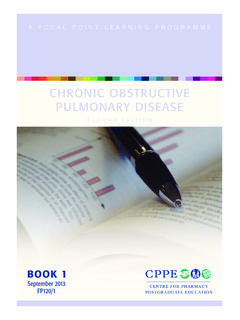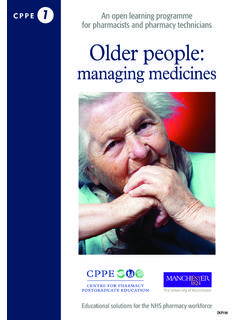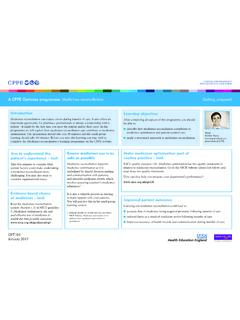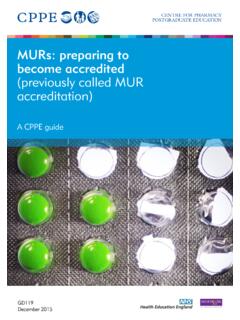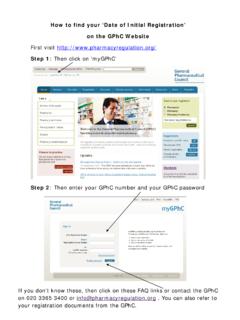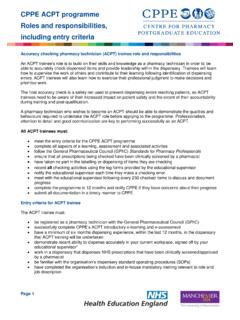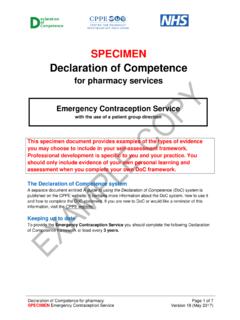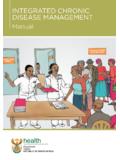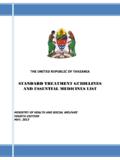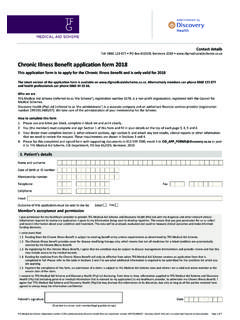Transcription of CHRONIC OBSTRUCTIVE PULMONARY DISEASE - …
1 CENTRE FOR PHARMACYPOSTGRADUATE EDUCATIONS eptember 2013FP120/2 BOOK 2A FOCAl pOINT lEArNINg prOgrAmmE CHRONIC OBSTRUCTIVEPULMONARY DISEASESECOND EDITION focal pointCOPD Book 22 Content contributorsHelen Marlow, pharmaceutical adviser, NHS England London region, external lecturer Kings College,University of London and managing director Managing Medicines LtdDr Helen Meynell, consultant pharmacist with an interest in respiratory and palliative medicine, Doncaster andBassetlaw Hospitals NHS foundation trustAlison Astles, tutor, CPPES amantha Scragg, tutor, CPPED iana Taylor, tutor, CPPECPPE programme developer Sarah Ridgway Green, regional manager, CPPER eviewersAnna Murphy, consultant respiratory pharmacist, University Hospitals of Leicester NHS trustDr Helen Meynell, consultant pharmacist with an interest in respiratory and palliative medicine, Doncaster andBassetlaw Hospitals NHS foundation trustVincent Mak, consultant physician in Integrated Respiratory Care, Charing Cross Hospital and CentralLondon Community Healthcare and clinical director at Outer North West London Integrated Care ProgrammeCPPE reviewersAlison Astles, tutor, CPPEJan Douglas, regional manager, CPPEP iloted by Claire Hough, tutor.
2 CPPEWe thank the developer, contributors and reviewers of the first edition of this have developed this learning programme to support your practice in this topic area. We recommend thatyou use it in combination with other established reference sources. If you are using it significantly after the dateof initial publication, then you should refer to current published evidence. CPPE does not accept responsibilityfor any errors or websites CPPE is not responsible for the content of any non-CPPE websites mentioned in this programme or for theaccuracy of any information to be found URLs were checked on 3 July names and trademarksCPPE acknowledges the following brand names and registered trademarks mentioned throughout thisprogramme: Ventolin , Salamol , Airomir , Bricanyl , Atimos , Oxis , Serevent , Atrovent , Spiriva ,Foradil , Onbrez , Eklira , Seretide , Seebri , Symbicort.
3 Published in September 2013 by the Centre for Pharmacy Postgraduate Education, Manchester PharmacySchool, University of Manchester, Oxford Road, Manchester, M13 9 & artwork by Gemini West LtdPrinted by Gemini Press Ltd Printed on FSC certified paper stocks using vegetable based inks. focal pointCOPD Book 23 ContentsLearning with CPPE 4 About your focal pointevent5 Case study management of COPD6 Clinical vignettes10 Directing change 13 Putting your learning into practice 15 Suggested answers 18 References41focal pointCOPD Book 24 Learning with CPPEThe Centre for Pharmacy Postgraduate Education (CPPE) offers a wide range oflearning opportunities for the pharmacy workforce.
4 We are based in the ManchesterPharmacy School and Pharmaceutical Sciences and are funded by the Departmentof Health to provide continuing education for practising pharmacists and pharmacytechnicians providing NHS services in England. For further information about ourlearning portfolio, visit: recognise that people have different levels of knowledge and not every CPPE programme is suitable for every pharmacist or pharmacy technician. We havecreated three categories of learning to cater for these differing needs:Core learning (limited expectation of prior knowledge)Application of knowledge (assumes prior learning)Supporting specialties (CPPE may not be the provider and will direct youto other appropriate learning providers).
5 This is a learning programme and assumes that you already have someknowledge of the topic professional development (CPD) You can use this focal pointunit tosupport your CPD. Consider what your learning needs are in this area. Use yourCPD record sheets to plan and record your guardians A programme guardian is a recognised expert in an arearelevant to the content of a learning programme. They will review the programmeevery six months to ensure quality is maintained. We will post any alterations orfurther supporting materials that are needed as an update on our website. Werecommend that you check for these updates if you are using a programme morethan six months after its initial publication We hope you find this learning programme useful for your help us to assess its value and effectiveness by visiting the my CPPE recordpage on our website.
6 Alternatively, please email us at: pointCOPD Book 25 About your focal pointeventBefore coming along to this event you will have already completed Book 1 to helpyou identify your own learning needs, read the key information and then related it toyour own area of practice and professional book uses a case study and clinical vignettes to help you apply what you havelearnt so far and encourages you to measure the changes in your practice. We alsoinclude some suggested answers to the learning this event you will work through a more detailed case study and some briefclinical vignettes with your professional colleagues, and discuss your approach to theDirecting change scenario from Book 1.
7 You may be attending a CPPE tutor-ledevent or have arranged to meet with your own CPPE learning community . Just to remind you, in this unit we consider: the recent trends in COPD the causes, risk factors and pathogenesis of COPD how COPD is diagnosed the management of COPD, including drug and non-drug therapies the specific roles of various medicines in stable DISEASE and acute is to certify thatattended the CPPE focal pointevent on COPD onLocationCPPE pharmacy tutor signatureCPPE tutor namefocal pointCOPD Book 26 Case study management of COPDTime to prepare: 15 minutes to review and answer the questions individually orin small to discuss.
8 15 minutes to discuss the answers with your is 60 years old and has recently retired from her job working for a firm thatmanufactures fabrics. She is a thin lady who appears older than her stated visits her GP as she is beginning to get short of breath while climbing thestairs and is struggling to walk to the end of her road. She explains to the GP thatfor the past six months she has become increasingly short of breath while carryingout daily activities. Glynis takes no regular medications and has no history of drug says she has not had any acute changes in her breathing, but she does have achronic cough that produces around one or two tablespoons of clear sputum cough has not changed recently, and the colour and volume of her sputum havealso remained unaltered.
9 She says she is not suffering from chest pains or wheezingand has not been coughing up blood. She has smoked at least ten cigarettes a day since she was 20, but has recently cutdown to five a day because of her shortness of breath. She says she would like tostop completely, but finds it hard because she has smoked for such a long time. Inthe last few years she has had at least two chest infections each year requiringtreatment with antibiotics. The GP suspects COPD and conducts spirometry testing, the results of which L LFEV155 LFEV1 on evidence-based medicine focal pointCOPD Book clinical features and risk factors of COPD does Glynisexhibit?
10 What grade of severity does Glynis' COPD fall into? is the single most important intervention that will helpGlynis' symptoms and improve her prognosis? How could thepharmacy team support such an intervention? initial treatment would you recommend for Glynis? Onwhat evidence have you based your decision?Several weeks later, Glynis visits your pharmacy. On her last visit the GP prescribedsalbutamol and ipratropium inhalers, taking two puffs of each four times a day via ametered-dose inhaler and spacer. Glynis tells you that her inhaler technique isexcellent and that she has been taking the medication as she was told. When you askabout her breathing she tells you that there has been little improvement.
